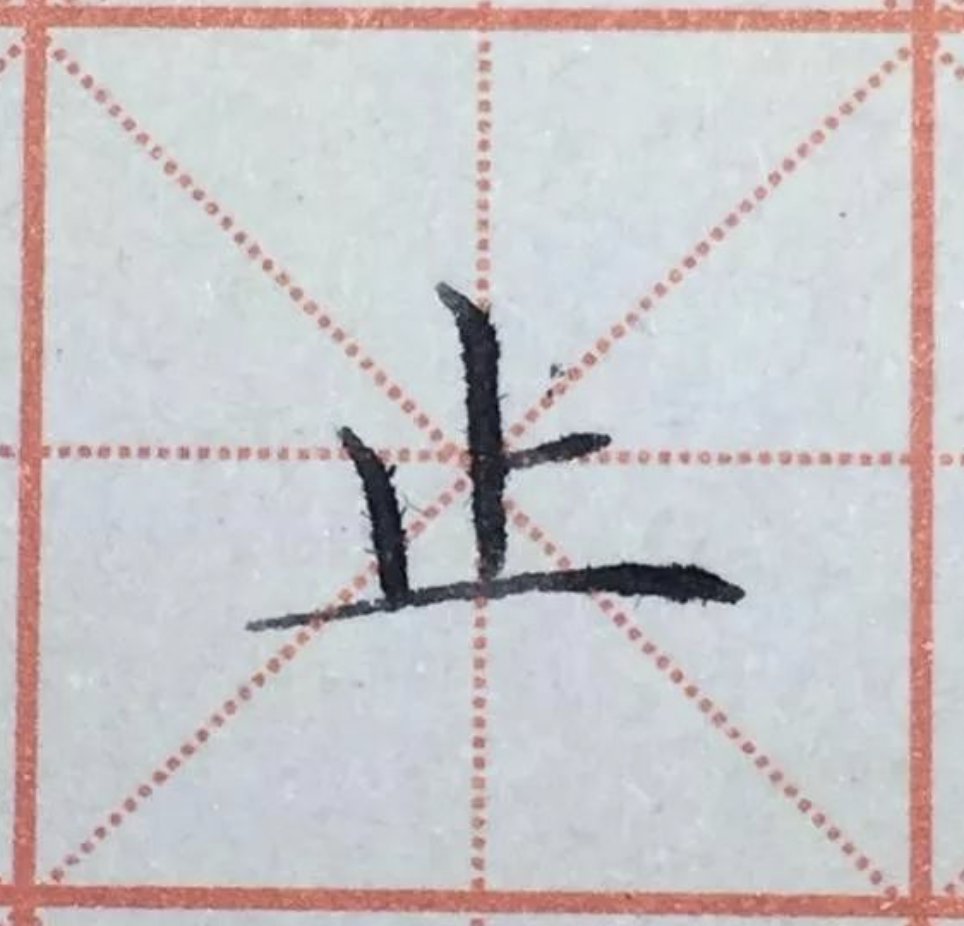Strokes are the smallest units that make up Chinese characters. The practice and mastery of basic strokes is a lifelong goal for a calligrapher. Especially for beginners, it is undoubtedly of paramount importance to master the basic strokes of pen calligraphy.

The basic strokes of regular script are composed of eight basic strokes: dot, horizontal, vertical, left, back, lift, fold, and hook. However, in actual writing, these eight strokes have derived many kinds of strokes.
1.1 Right point: Start writing lightly, stroke downward to the right from light to heavy, pause for a moment and then close the pen. Do not re-draw, write it in one go. The key to writing something is to follow the writing process, and never put the pen away as soon as the tip of the pen touches the paper.
1.2 Left point: Place it on the left side of the word, echoing the right point, and lift the pen to the upper right. Pay attention to the angle and writing method.
1.3 Vertical dot: It is actually a deformation of the right dot. When the dot appears in the center of the prefix, people are used to connecting the end of the dot with the stroke below. Therefore, this dot shape is relatively straight.
2.1 Long horizontal stroke: The stroke is heavy when starting, the stroke is lighter when moving to the right, and the stroke is slightly stroked when finishing to the right. Writing should be carried on your shoulders.
2.2 Medium horizontal: The writing method is similar to that of long horizontal. It should be written thickly, firmly and powerfully.
2.3 Short horizontal stroke: Start writing lightly, and then stroke to the right from light to heavy when writing about half of the long horizontal stroke, stop writing and then stop. The strokes are slightly tilted upward to the right.
3.1 Vertical stroke: The stroke is slightly heavier when the stroke is started, the stroke is lighter when the stroke is vertical and downward, and the stroke is slightly heavier when the stroke is closed.
3.2 Hanging needle vertical: The writing method is the same as hanging needle vertical, except that when closing the pen, it is from heavy to light, the pen is drawn forward and closed, and the strokes are pointed.
3.3 Short vertical strokes: The writing method is the same as that of Chui Lu vertical strokes, but the strokes are shorter. Short vertical strokes should be written short, thick and powerful.
4.1 Long stroke: The stroke is slightly heavier, and the stroke is drawn downward to the left from heavy to light, and the tip is raised when the stroke is closed.
4.2 Vertical writing: Different from long writing, vertical writing is vertical first and then writing. The writing method and application are different.
4.3 Flat stroke: The writing method is similar to long stroke, but the strokes are shorter and often not noticed by people, but it must be written well.
5.1 Oblique stroke: Pay attention to twists and turns. Start the pen lightly, stroke downward to the right, press the pen hard when you reach the stroke, and then draw the pen out horizontally.
5.2 Flat stroke: The writing method is the same as that of diagonal stroke, but the angle is changed.
5.3 Counterattack: Use the exposed edge to enter the pen, and return the edge to close the pen. The angle must be grasped.
6. Lift: The stroke is heavier, and the stroke is upward to the right from heavy to light, and the stroke should be sharp when closing.
7.1 fold: Start the pen horizontally, pause when you reach the corner, then stroke downward, and finally close the pen.
7.2 Horizontal hook: write a short horizontal stroke, pause briefly and then fold downward, sometimes tilting slightly to the left. When you reach the hook, pause briefly and then hook upward to the left, writing in one stroke.
8.1 Vertical hook: Write vertical hook when writing vertical hook. When you reach the hook point, pause for a moment and hook up to the left. When the tip comes out, close the pen. The angle of the hook is about 45 degrees, and the part where the hook comes out should be shorter.
8.2 Oblique hook: The stroke is slightly heavier, and the pen is drawn straight down and to the right. When it reaches the hook point, it is hooked upward, and the pen should be pointed when closing. Not too straight or too curved.
8.3 Curved hook: The vertical pen is slightly curved, and the hook is flat. When writing, pay attention to being strong and round.
8.4 Upward hook: When you start and close the pen, you must use the sharp edge. Write in one stroke, and the hook should not be long.
8.5 Right curved hook: The vertical hook must be alive, the hook must be picked to die, and the hook is drawn straight up.
8.6 Horizontal and oblique hook: Do not write too fast and pay attention to the curvature and strength.
9. Vertical mention: Different characters are used differently, so pay attention to forming a corresponding relationship with the characters.
10 Horizontal strokes: It is easier to draw strokes, but you must pay attention to the echo relationship.
There are many Chinese characters, but the basic strokes that make up Chinese characters are nothing more than these. For those who learn calligraphy, it is very important to write the strokes well. Only by writing the strokes well and accurately can we write Chinese characters well.








